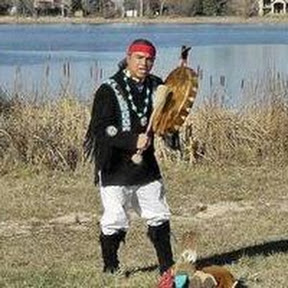Native Culture

Only when we as a society gain the ability to direct our independent spiritual path which we must realize as part of the lesson can we then expect to achieve a better life for ourselves and for the generations to come after us. This is our personal responsibility to achieve and further it is incumbent upon each of us to connect with all life in the same manner that a fully realized spiritual person would do.
When practiced devoutly in Native American Culture, council is an accessible spiritual process that can be a catalyst for transformation. It may take a while, but I've seen the practice of council bring important changes to participants for more than 12 years that I have been a leader. The changes are subtle at first, but clearly detectable. When council takes hold, one could say that decision-making and other interactive processes become more democratic in a more spiritual way. From a purely spiritual aspect, we are more confident of our path and more likely to flourish in it when we learn to take control of our own spiritual life.
Air moves us
Fire transforms us
Water shapes us
Earth heals us
And the circle of the wheel goes round and round
And the circle of the wheel goes round'
Blackfoot Elder - Nation AKA (Two Feathers)
Native American Indian Traditional Code of Ethics
Medicine -Holy People
The Purification Ceremony
Hopi Corn Dance
Sacred Corn Dance
The significance and meaning from tribes of the South West.
The Sacred Corn Dance is a ceremonial dance with deep spiritual significance in many Indigenous cultures of North America, particularly among Native American tribes such as the Zuni, Hopi, Pueblo, and others from the Southwest and Great Plains regions. Though specific interpretations can vary between cultures, the general themes shared across these traditions include:
1. Honoring Corn and Agriculture
Corn (also called maize) is a sacred crop in many Indigenous cultures. It holds both practical and spiritual importance as it is a primary food source. The Sacred Corn Dance is a way to honor the spirit of the corn, which is often seen as a gift from the Earth or the Creator. It may symbolize the cycle of life, growth, death, and rebirth, as corn grows from the ground, is harvested, and then nourishes the people.
2. Renewal and Fertility
The dance often takes place at the time of planting or harvesting, symbolizing the renewal of life and the fertility of the land. The dancers, often wearing regalia that incorporate corn imagery, may invoke blessings for a fruitful harvest and for the ongoing prosperity of the community.
3. Spiritual Connection
The dance is also a form of prayer, a way for participants to connect spiritually with the land, the ancestors, and the natural world. The movements, chants, and songs often carry deep meanings, and the rhythm of the dance is believed to align participants with the heartbeat of the Earth.
4. Cultural Preservation
Beyond its agricultural and spiritual significance, the Sacred Corn Dance also serves as a way to pass on cultural traditions to younger generations. It's an important event for community bonding, storytelling, and the continuation of ceremonies that have been practiced for centuries.
5. Healing
Some interpretations of the dance also involve healing aspects, both on a personal level and for the larger community. The rhythm of the dance, as well as its connection to the natural world, is believed to promote harmony and balance, which is an essential aspect of Indigenous spiritual practices.
While the exact form and ritual of the Sacred Corn Dance vary between tribes, its themes of reverence for nature, connection to ancestors, and the cycle of life are consistent.


